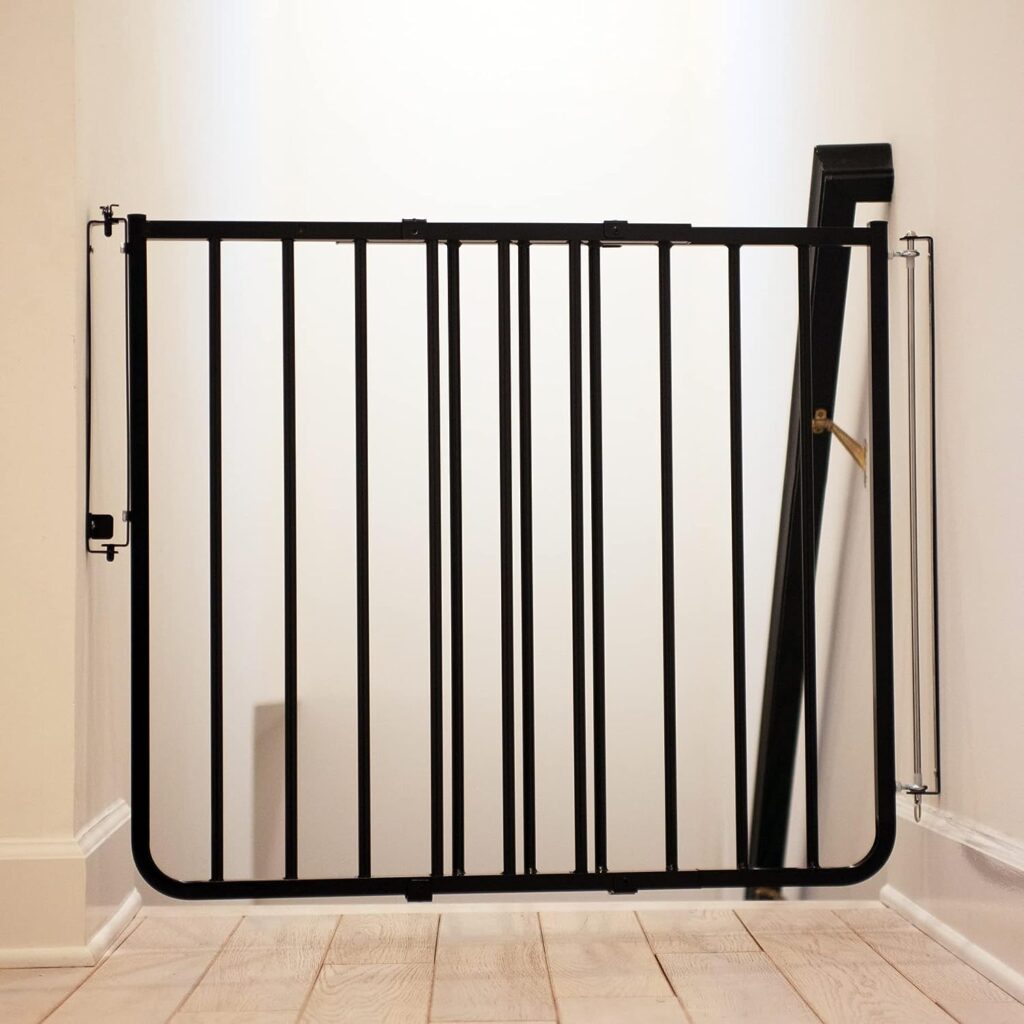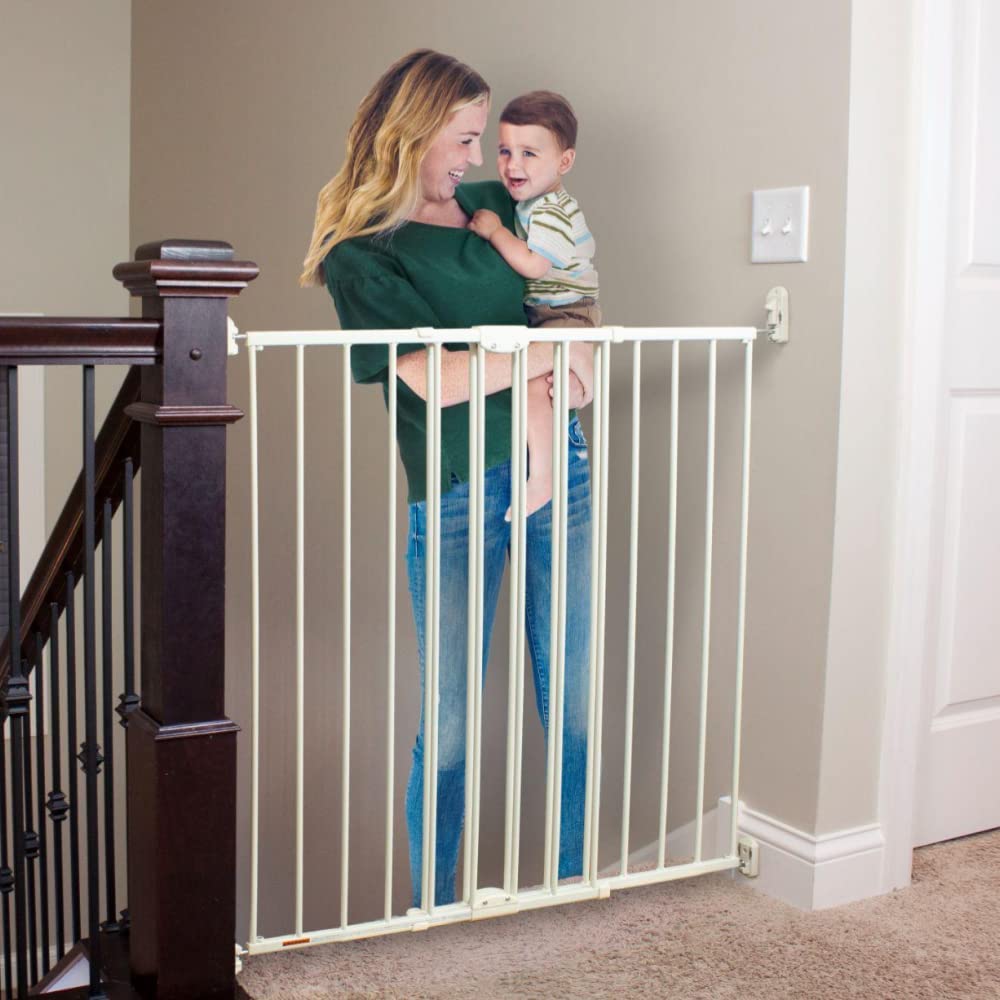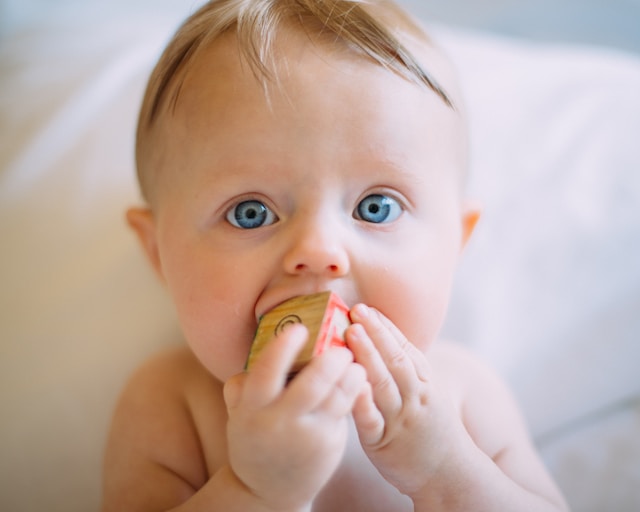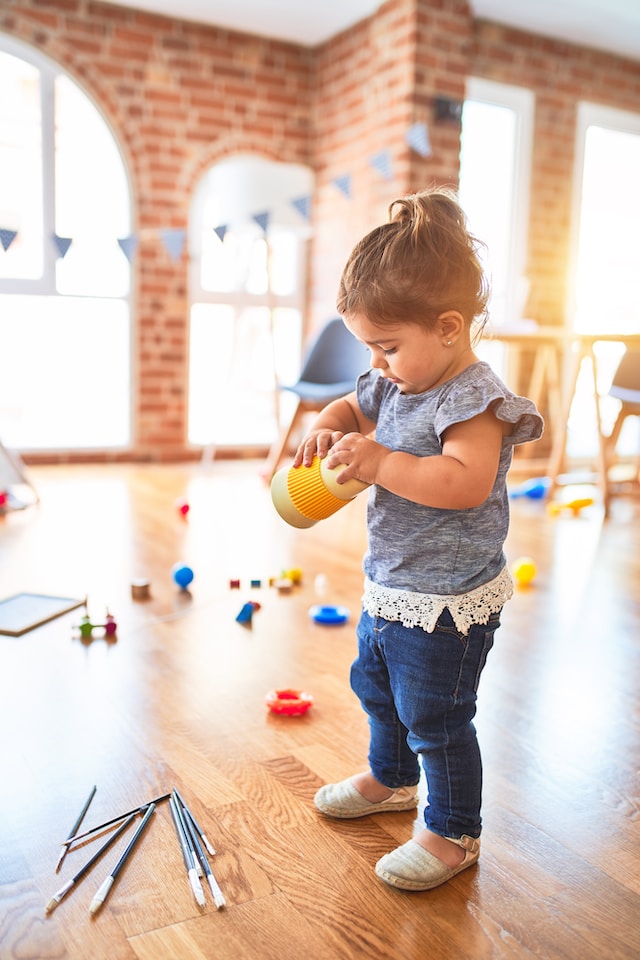As any parent will tell you, safety is one of the most critical issues — especially with the level of curiosity a baby or small child has!
Safety risks can be found in each and every corner of your home, but some of the places that are notorious for pinching those little fingers and toys are interior and exterior doors.
In fact, a door-related injury happens roughly every four minutes in the U.S.!
Baby-proofing the doors in your home is an important step to keeping your home safe for your little ones. Not only can doors pinch fingers, but they can also lead children into other dangerous situations (like the backyard pool!)
In this post, we will be going over the ways to baby-proof your interior and exterior doors, no matter what type you have in your home.
When Should You Start Baby-Proofing Your Doors?
When it comes to baby-proofing any area of your home, sooner is always better than later. How does that old adage go — prevention is always better than a cure!
When it comes to doors, it is imperative that you have them baby-proofed before your baby starts walking, somewhere between 8 and 16 months. This is when you may find your little one turning into an escape artist and trying to make their way into the wide world.
However, it never hurts to start sooner. Baby-proofing the doors before a baby starts to crawl can also help prevent any injuries from occurring. Crawling typically starts somewhere between 6 and 10 months.
Preventing Your Baby From Using the Door on Its Own
You can find all different kinds of safety locks for baby-proofing your doors. However, it can be tricky to know which lock is best for your particular type of door. This section will break down which locks are best for which doors.
How do I Baby Proof Exterior Doors
A little one opening an exterior door and wandering off is a huge fear for many parents. There are so many dangerous things outside! Learn how to baby-proof your exterior doors, and keep your baby away from dangers like traffic, a backyard pool, and strangers!
1. Security Chain
A door security chain consists of a track that attaches to the inside of the door and a short chain that attaches to the door frame. It can only be locked from the inside, and it allows the door to open slightly while preventing it from opening wide enough for a person or even a small child to slip through.
2. Door Knob Lock
Typically made of plastic, door knob locks are lightweight covers that go around the door knobs (both exterior and interior) inside your home. These locks make it difficult for a child to grip the knob, leaving them unable to turn the handle and escape.
3. Lever Handle Lock
Lever handles may be the easiest type of door handles for a small child or baby to open which makes it extremely important that you baby-proof them! Lever locks fit over the handle and keep a toddler from being able to pull down and open the door.
How do I Baby Proof Interior Doors
Most door-related problems will be due to the internal doors in the home. Your curious baby will start roaming the halls soon enough, and all of the common home hazards will be harder to get to if certain interior doors are kept locked up tight!
1. Door Top Lock
Some kids just don’t seem to be deterred by door handle locks or even lever locks. For those lock pick-types, you may need a lock that is just too far out of reach: a door top lock!
2. Door Monkey
Locking doors while slightly ajar, the Door Monkey keeps your little ones secure while also protecting against pinched fingers and toes. It can be used with any style door knob, and it also allows for the circulation of fresh air.
What About the Other Types of Doors?
1. Sliding Doors
You may think that sliding glass doors will be harder to baby-proof, but with a sliding door lock or stopper, you can keep your little one inside where it is safe. This type of lock can also be used on interior sliding doors such as pantry and laundry closet doors.
2. Bifold Doors
Bifold doors need to be baby-proofed for two reasons. The first is to keep the child out of restricted or dangerous areas in the home, and the second is to prevent fingers from being pinched in the door panels.
3. French Doors
Baby-proofing French doors may take a combination of techniques. You may be able to use one of the methods listed above, such as the lever handle lock or the door top lock.
If your French doors have glass panes, you will need to make sure the glass is baby-proofed as well.
If shatter-resistant glass was not used in the panes, that could be a potential safety hazard. If it isn’t shatter-resistant, then you will need to apply a laminate film to each pane to protect your child from serious harm.
4. Pool Door
It is of the utmost importance that your baby doesn’t make their way into the pool area unsupervised. At least 350 children die each year in their home pools in the U.S.
Your pool door should have a lock that is only accessible from the poolside. If an adult would need to reach over the gate to access the lock, a small child is unlikely to be able to do so. Plus, the lock should fall automatically to prevent it from being forgotten.
5. Dutch Door
A door that has two panels that open separately (one on top and one on the bottom) is called a Dutch door. It is almost like a built-in baby-gate! If you are trying to keep your baby out of a particular room in the house but don’t necessarily want to keep the door shut, a Dutch door may be a good option.
You can install a door lock or a deadbolt to the bottom half of the Dutch door to keep your small one from being able to open it.
Keep Baby Fingers From Getting Jammed in Hanging Doors
Pinch Guards
A pinch guard is a device that keeps your child’s fingers from getting pinched inside a door. Most pinch guards stop the door from closing all the way, thus saving those little fingers from getting smashed between the door and the door jamb.
There are different types of pinch guards available, but they all work in a similar method. It is just a matter of finding the one that works best for your situation and type of doors.
Some More Safety Tips
1. Can you lock your kids in their room?
There may come a day when you feel like the safest place in the home for your baby is their bedroom. While that may be true, it is never okay to look at your child in a room. Not only will it cause your baby undue stress, but you may not be able to help them in case of an emergency.
2. Using Baby Gates
Another way to keep a small child out of a particular room is with a baby gate. These will be effective until the child is old enough (or daring enough) to climb over them. The gate can be put in front of staircases or in front of doorways that you do not want your baby to access.
3. Using Baby Monitor
While a baby monitor won’t keep your child out of certain areas of your home, it does allow you to keep tabs on their activities, even from a distance. A high-quality baby monitor will let you hear and even see your baby. They are great to have when the baby is napping or going to be for the night, allowing you to peek in at them whenever you want to be sure that they are still asleep.
4. Using Door Alarm
If you leave your door alarm on all the time, you will be alerted if one of your doors or windows is opened by your child. While the alarm won’t prevent your child from opening the door, it should give you enough warning that you can prevent your baby from getting too far away.
FAQ
Are there any DIY solutions to stop a baby from using the door on its own?
There are several ways that you can keep your baby out of off limit rooms that you can DIY!
Washcloth
You can put a washcloth between the door and the door jamb making the door unable to open without a little bit of force. The washcloth should be placed in the door above the height of the handle so that it can’t be reached by your curious little one.
Cardboard
You can use a strip of cardboard and tape to make a DIY handle cover similar to the plastic ones you can buy. The cardboard should encircle the knob, but not so large that it can be pulled off easily. Your little one won’t be able to grip the cardboard to get traction on the handle.
Are there any DIY solutions to prevent pinched fingers?
There are always DIY solutions for the creative parent! But one way that you can stop your little one from slamming their fingers in a door is by adding a bit of pool noodle.
Cut a 4 to 5 inch piece of pool noodle, and then remove a section length-wise that is of the same thickness as your door.
Then you slide it onto the end of the door so it cannot be shut into the door frame. Little fingers will thank you!
Best places to add child safety door locks?
- Exterior doors
- Interior doors to off limit rooms
- Pool doors/gates
- Cabinets that contain chemicals, dangerous objects, or cleaning supplies
- Doors that lead to staircases
- Garage doors
- Closet doors that contain dangerous objects or cleaning supplies
- Pantry doors
- Bathroom doors
Final Words
As a parent, the safety of your baby is one of your number one concerns, and we hope that this baby-proofing guide offers you a little peace of mind.
Remember, making your home safe is an ongoing task, and you will need to update some of your methods as your child ages and becomes more determined to go where they don’t belong!








